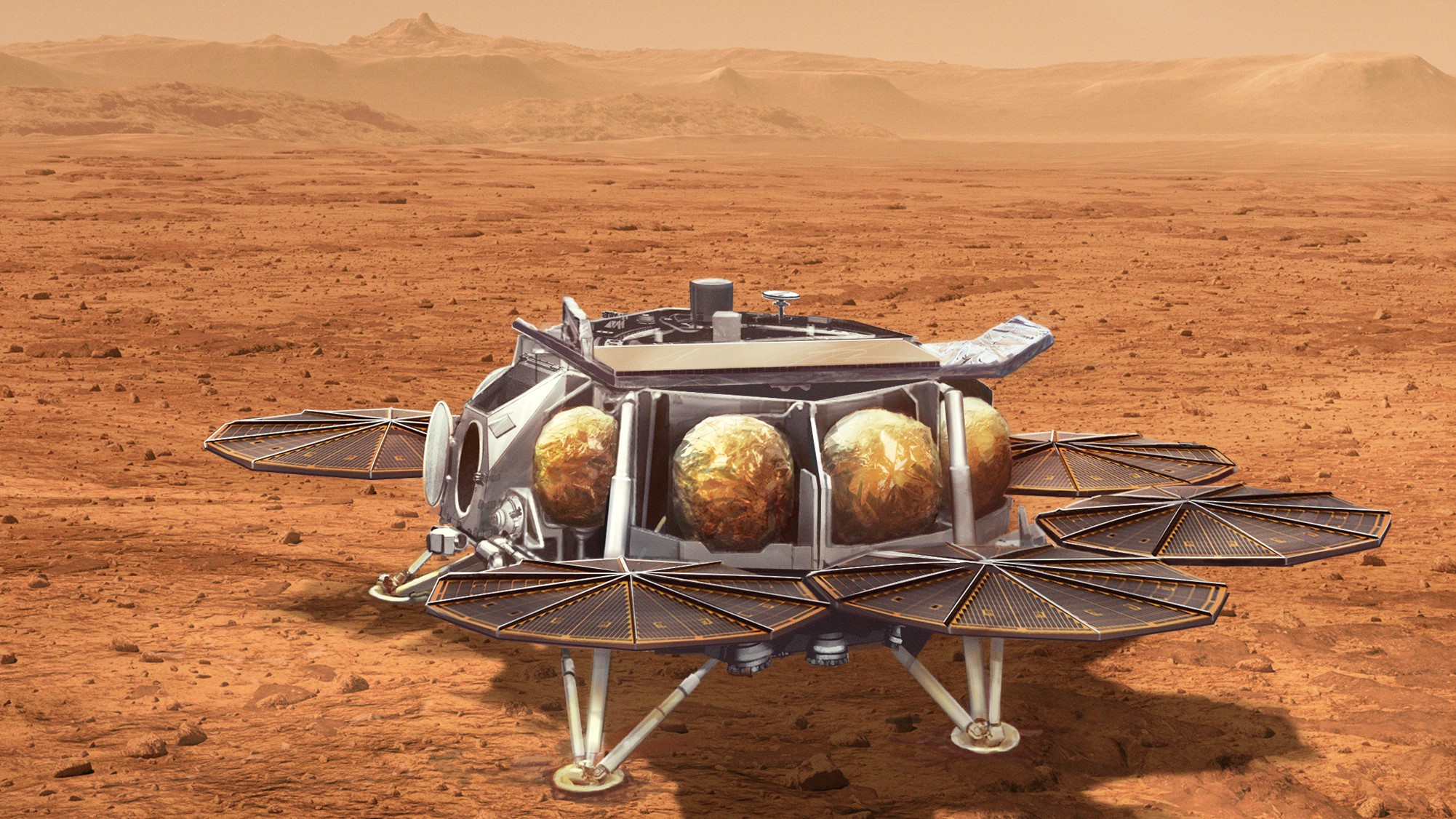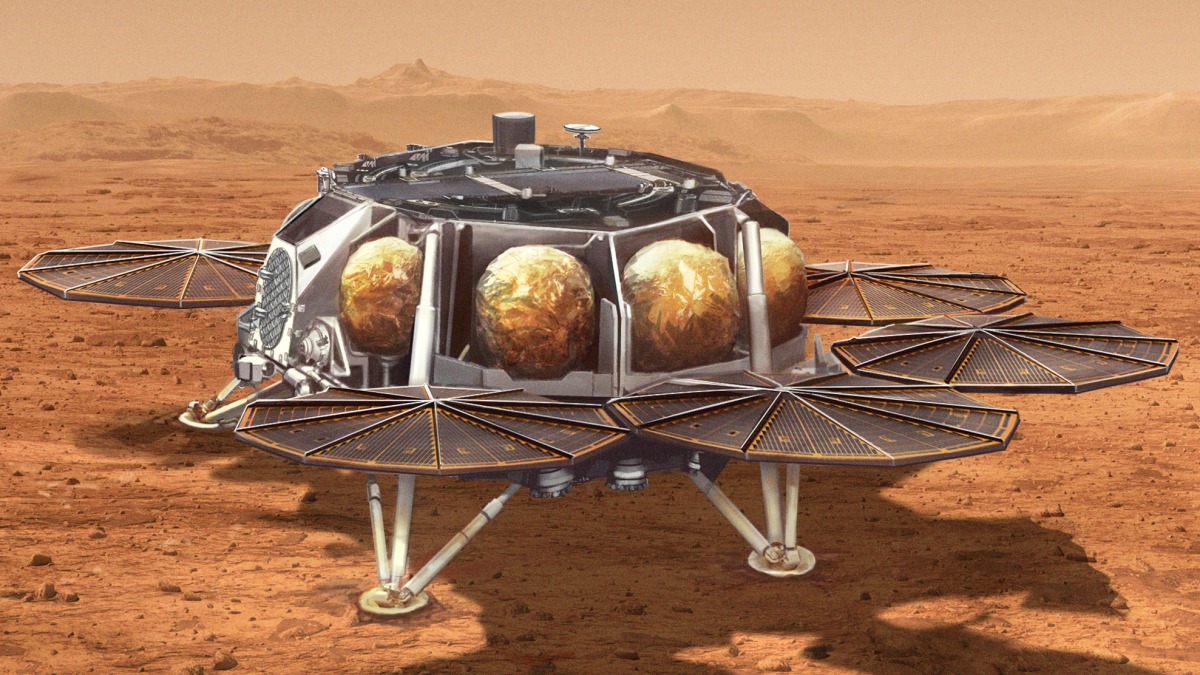Mars sample return details coming next week, NASA and European Space Agency promise
The briefing will present a mission architecture proposal by NASA and the European Space Agency.

NASA and the European Space Agency (ESA) have new details to share on how they will bring pieces of Mars to Earth, and they'll share their plans next week.
The agencies will hold a news conference about Mars sample return on Wednesday (July 27) at 11 a.m. EDT (1500 GMT), which you can watch here at Space.com or directly at the agency's website.
The milestone project aims to bring Martian samples gathered by the Perseverance rover to Earth as early as 2033. The goal is to allow scientists to scrutinize the samples for any signs of ancient Martian life, as well as information about how the Red Planet evolved over the eons.
Related: 12 amazing photos from the Perseverance rover's 1st year on Mars
The agencies, NASA said in a statement announcing the news conference, "recently held a systems requirement review as part of the Mars Sample Return campaign's conceptual design phase — a phase when the architecture is refined and solidified." (In terms of spaceflight missions, architecture refers generally to the concepts underlying how a mission will be carried out.)
The architecture proposal will be finalized in September, if the schedule holds, and the agencies will likely discuss the pathway to approval during the briefing.
Participants in the briefing will include:
Get the Space.com Newsletter
Breaking space news, the latest updates on rocket launches, skywatching events and more!
- Thomas Zurbuchen, associate administrator of NASA's Science Mission Directorate
- David Parker, director of ESA's Human and Robotic Exploration
- Jeff Gramling, director of NASA's Mars Sample Return Program
- Francois Spoto, head of ESA's Mars exploration group

NASA asked the public to provide comment on an environmental assessment for the mission in May this year via online comments and two virtual public meetings. The agency will consider these comments throughout the mission's development and plans to release a draft environmental impact statement later in 2022, NASA officials said at the time.
The design changed considerably in March, when the coalition decided to develop a second lander due to the mass requirements of the mission. The first lander will send a NASA-developed Mars ascent vehicle (MAV) to the surface, while the second will bear an ESA-built "fetch rover" to pick up Perseverance's samples.
Once the fetch rover retrieves the cache from Perseverance, which the rover is collecting in Mars' Jezero Crater, the rover will place them inside the MAV. The MAV will then launch and carry the samples to Mars orbit, handing them off to an ESA-provided Earth-return orbiter for return to our planet.
The addition of the second lander adds time to the mission, pushing the launch date two years to 2028 and the return to Earth mission pushed another two years to 2031.
Nevertheless, NASA officials said it was the right choice. They said the revised plan "is consistent with the Mars Sample Return Independent Review Board's (IRB) finding that a dual-lander architecture may improve the probability of mission success."
Follow Elizabeth Howell on Twitter @howellspace. Follow us on Twitter @Spacedotcom and on Facebook.
Join our Space Forums to keep talking space on the latest missions, night sky and more! And if you have a news tip, correction or comment, let us know at: community@space.com.

Elizabeth Howell (she/her), Ph.D., was a staff writer in the spaceflight channel between 2022 and 2024 specializing in Canadian space news. She was contributing writer for Space.com for 10 years from 2012 to 2024. Elizabeth's reporting includes multiple exclusives with the White House, leading world coverage about a lost-and-found space tomato on the International Space Station, witnessing five human spaceflight launches on two continents, flying parabolic, working inside a spacesuit, and participating in a simulated Mars mission. Her latest book, "Why Am I Taller?" (ECW Press, 2022) is co-written with astronaut Dave Williams.
